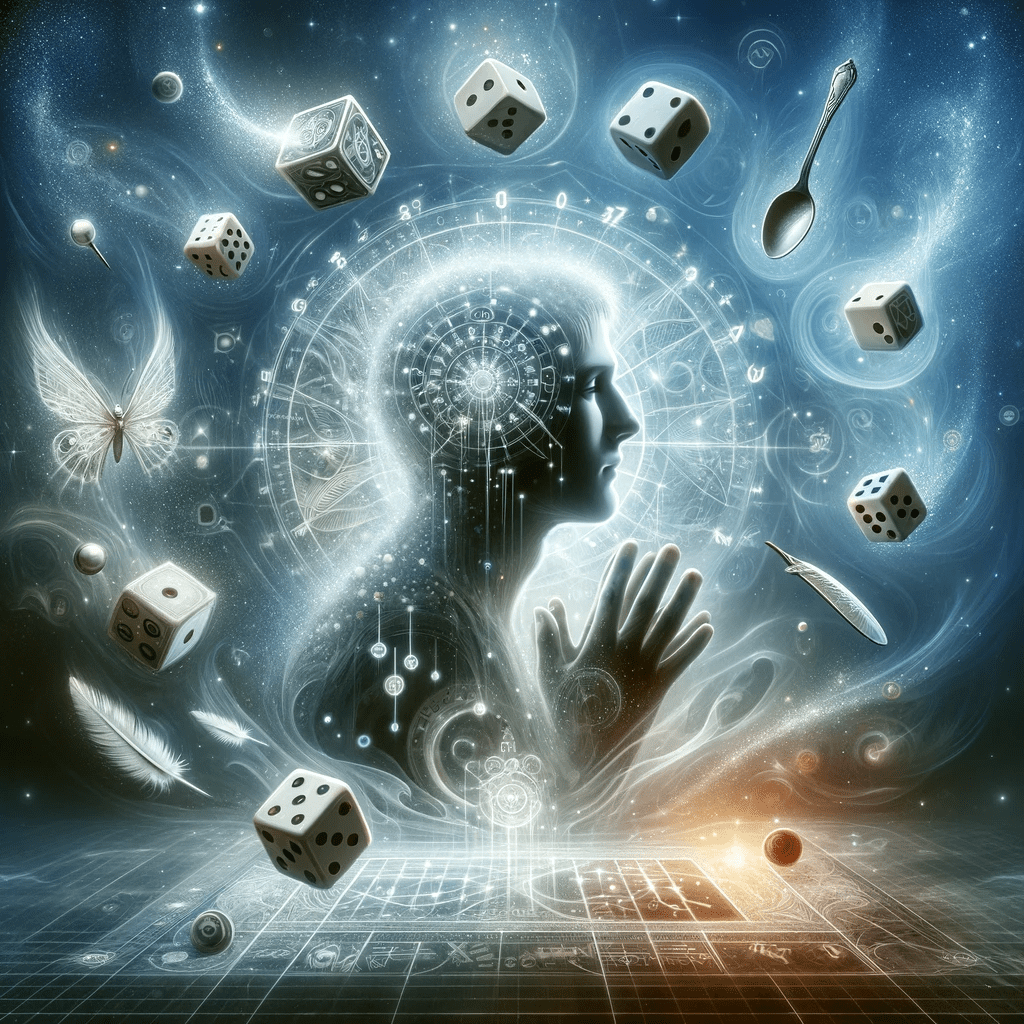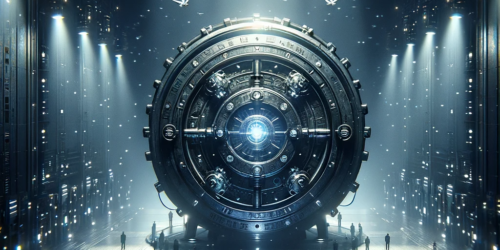Psychokinesis

Psychokinesis, also known as telekinesis, is a phenomenon in which a person is said to have the ability to influence or manipulate physical objects using only the power of their mind. This idea has been a topic of interest and speculation in both scientific and paranormal communities for decades, with numerous studies and experiments conducted to explore the validity of such claims.
Psychokinesis research and parapsychology are closely related but have distinct focuses within the broader context of the study of paranormal phenomena.
Parapsychology is a field of research that investigates a wide range of paranormal and psychic phenomena, which include extrasensory perception (ESP), such as telepathy, clairvoyance, and precognition, as well as psychokinesis (also known as telekinesis) and other paranormal events. Parapsychology seeks to explore and understand these phenomena, often using scientific methods and experimental approaches in an attempt to determine their validity and, if possible, explain their underlying mechanisms.
Psychokinesis research, on the other hand, specifically focuses on the study of psychokinesis, the alleged ability of individuals to influence or manipulate physical objects using only the power of their mind. This area of research falls within the scope of parapsychology but is more narrowly focused on this particular phenomenon. Psychokinesis research involves designing experiments, such as those involving random event generators or dice-throwing, to test for the presence of psychokinetic abilities and to explore the potential mechanisms by which these abilities might operate.
The concept of psychokinesis has its roots in ancient cultures, where legends of people with extraordinary mental powers can be traced back thousands of years. In modern times, the study of psychokinesis has largely been associated with the field of parapsychology, which investigates paranormal and psychic phenomena. Parapsychologists have conducted experiments to test the existence of psychokinetic abilities, often in controlled laboratory settings, using a variety of methods and devices such as random number generators, dice, and the classic bending of spoons.
The science behind psychokinesis is often debated, with some researchers proposing various theories to explain how such abilities might work. One theory suggests that psychokinesis could be related to the manipulation of subatomic particles or quantum fields, while others propose that it could involve the interaction of human consciousness with the physical world through currently unknown mechanisms. While there is no concrete scientific evidence supporting the existence of psychokinesis, proponents argue that the phenomenon could be explained by as-yet undiscovered laws of physics or other natural phenomena.
One of the most famous psychokinetic experiments was conducted by physicist Helmut Schmidt in the 1970s (Source: Radin, Dean. “The Conscious Universe: The Scientific Truth of Psychic Phenomena.” HarperOne, 1997). Schmidt’s experiments involved the use of random event generators (REGs), which produced a random sequence of zeros and ones. Participants were asked to mentally influence the REGs to produce either more zeros or ones. Schmidt reported statistically significant results, suggesting that the participants’ intention had indeed influenced the REGs, but these findings have been controversial and remain a subject of debate.
In the 1960s and 1970s, a man named Uri Geller gained widespread attention for his alleged psychokinetic abilities, such as bending spoons and fixing broken watches using only the power of his mind (Source: Marks, David, and Richard Kammann. “The Psychology of the Psychic.” Prometheus Books, 2000). Geller’s demonstrations were highly publicized and attracted the interest of both the public and the scientific community. However, skeptics have often criticized Geller’s performances as magic tricks and sleight of hand rather than genuine psychokinetic feats.
The U.S. government has shown interest in psychic phenomena, including psychokinesis, and conducted research programs such as the Stargate Project, which was aimed at investigating the potential military and intelligence applications of psychic abilities (Source: McMoneagle, Joseph. “Remote Viewing Secrets: A Handbook.” Hampton Roads Publishing, 2000). The Stargate Project, which operated from the 1970s to the 1990s, included research into remote viewing and other psychic phenomena but was eventually terminated due to a lack of evidence supporting the practical application of such abilities.
Experts in the field of parapsychology, such as Dr. Dean Radin, have argued that there is enough statistical evidence to suggest that psychokinesis might be a real phenomenon (Source: Radin, Dean. “Entangled Minds: Extrasensory Experiences in a Quantum Reality.” Paraview Pocket Books, 2006).
Michael Crichton’s “Travels” (1988) includes a section on spoon bending, where the author shares his personal experiences and speculations about the phenomenon.
Dr. Eric W. Davis is a physicist who has worked primarily in the fields of astrophysics, advanced propulsion systems, and space travel. Although his primary focus has not been on psychokinesis or parapsychology, he has shown interest in the broader topic of unexplained phenomena and has conducted research into advanced theoretical physics concepts that could potentially be relevant to understanding psychic phenomena.
Davis has been associated with the National Institute for Discovery Science (NIDS), a privately funded organization that existed from 1995 to 2004, which investigated various unexplained phenomena, including UFOs, crop circles, and alleged psychic abilities. While at NIDS, Davis explored topics such as wormholes, warp drive, and faster-than-light travel, as well as potential connections between these advanced physics concepts and unexplained phenomena.
In recent years, Davis has gained attention for his involvement in the Advanced Aerospace Threat Identification Program (AATIP), a secretive program funded by the U.S. Department of Defense to investigate unidentified aerial phenomena (UAP) and potential advanced aerospace technologies. Although the primary focus of AATIP was on UAPs rather than psychic phenomena, the program’s interest in cutting-edge scientific concepts and unexplained occurrences may have tangential connections to research on psychokinesis and other paranormal phenomena.
Several scientists and researchers have been involved in psychokinesis research, particularly in the field of parapsychology.
Some notable figures include:
- Dr. J. B. Rhine: Joseph Banks Rhine was a pioneer in the field of parapsychology and established the Parapsychology Laboratory at Duke University in the 1930s. He conducted numerous studies on psychokinesis, particularly with dice-throwing experiments, and developed methods to quantify and analyze the results.
- Dr. Helmut Schmidt: As mentioned earlier, physicist Helmut Schmidt conducted a series of experiments in the 1970s using random event generators (REGs) to test for psychokinesis. His experiments reported statistically significant results, suggesting the possible influence of human intention on the behavior of REGs, although these findings remain controversial.
- Dr. Dean Radin: A prominent figure in parapsychology, Dean Radin has been involved in research on various psychic phenomena, including psychokinesis. He has conducted experiments, published numerous articles and books, and argued for the potential existence of psychokinesis based on statistical evidence.
- Dr. Robert Jahn: Jahn, a physicist and former dean of engineering at Princeton University, founded the Princeton Engineering Anomalies Research (PEAR) laboratory in 1979 to study psychokinesis and other paranormal phenomena. The PEAR lab conducted experiments using REGs and other devices for more than two decades before closing in 2007.
- Dr. Daryl J. Bem: A social psychologist, Bem has conducted research on various psychic phenomena, including precognition and psychokinesis. His work has often focused on the potential influence of human intention on random physical systems, and he has published several papers on the subject.
- Dr. Rupert Sheldrake: A biologist and author, Sheldrake has explored a variety of paranormal phenomena, including telepathy, the sense of being stared at, and the possible existence of morphic fields that could potentially explain psychokinetic abilities.



